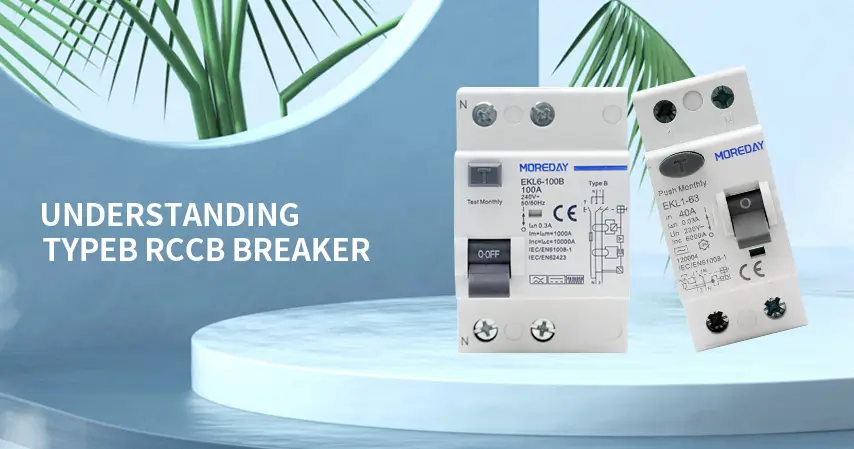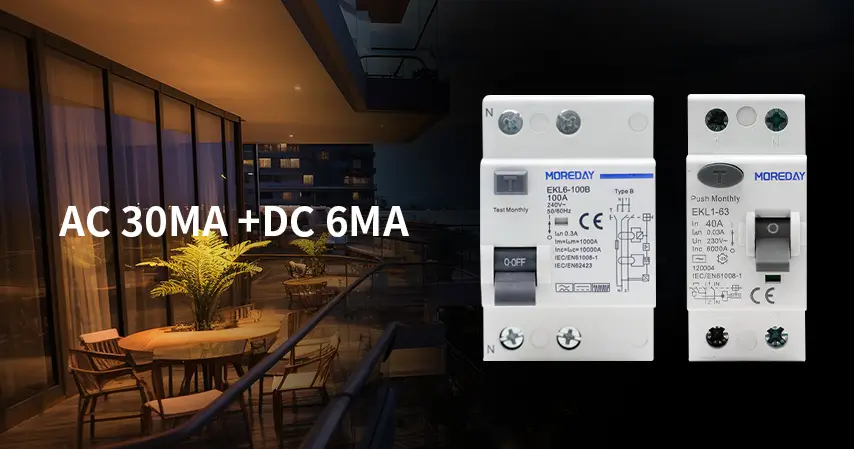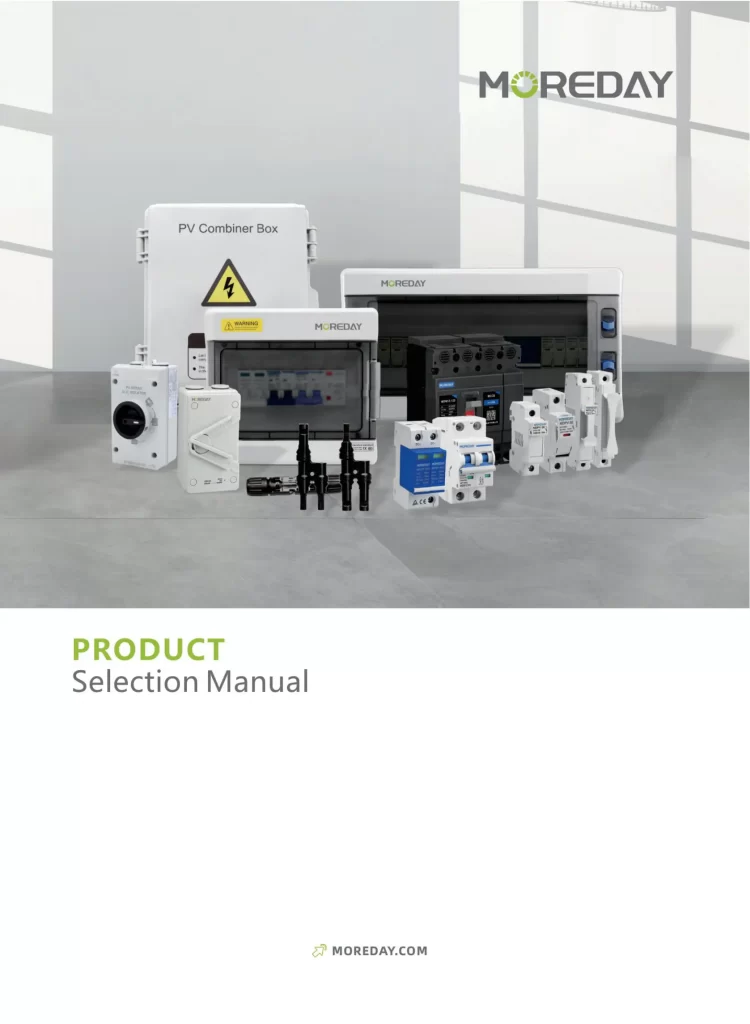Introduction
Residual Current Circuit Breakers (RCCBs) stand as indispensable guardians of electrical safety in both residential and industrial settings. Typeb rccb breaker is an indispensable in a world where electricity powers nearly every aspect of our lives, the potential for electrical hazards looms large. Whether it’s a faulty appliance, damaged wiring, or a sudden surge, these unseen threats can lead to devastating consequences such as electric shocks, fires, or even fatalities.
RCCBs act as vigilant sentinels, constantly monitoring the flow of electrical current within a circuit. They are designed to detect the slightest imbalance between the current entering and exiting a system, indicative of a leakage to earth. This leakage could result from a variety of factors, including insulation breakdown, moisture ingress, or accidental contact with live wires.
Upon detecting such anomalies, RCCBs swiftly spring into action, tripping the circuit and cutting off the power supply, thus thwarting the potential danger. This rapid response is crucial in averting catastrophic outcomes, safeguarding lives and property.

What is an RCCB Breaker?
An RCCB (Residual Current Circuit Breaker) is a crucial electrical safety device designed to protect against the risks of electric shock and fire caused by earth faults or leakage currents in electrical circuits. It functions by constantly monitoring the flow of electrical current through a circuit. If it detects any imbalance between the live and neutral conductors, indicating the presence of a fault or leakage current, the RCCB quickly disconnects the power supply to prevent harm to people or damage to equipment.
RCCB breakers are essential safety components in both residential and commercial electrical systems, providing a reliable means of protection against electric shock and fire hazards. They are often mandated by building codes and regulations to ensure compliance with safety standards and protect occupants from the dangers of electrical accidents.
These devices work by comparing the current flowing through the live conductor with the current returning through the neutral conductor. Under normal conditions, the currents should be equal, resulting in a balanced electrical load. However, if there is a leakage current, such as when a person accidentally comes into contact with a live wire or when insulation in the circuit deteriorates, the balance is disrupted, triggering the RCCB to trip and cut off the power supply within milliseconds.
Types of RCCB Breakers
Resource: https://www.youtube.com/watch?v=5WNAHhQEn9U
Type A RCCB Breakers
Type A RCCB breakers are designed to provide basic protection against earth faults, particularly for domestic and residential applications. They are effective in detecting sinusoidal AC residual currents, making them suitable for standard electrical systems found in homes and small businesses. However, they may not be capable of detecting certain types of residual currents, such as pulsating DC or smooth DC currents, which could limit their effectiveness in environments with more complex electrical loads.
Type AC RCCB Breakers
Type AC RCCB breakers are similar to Type A breakers but offer slightly broader protection by being able to detect both sinusoidal AC and pulsating DC residual currents. This makes them more versatile and suitable for environments where a mix of electrical loads is present. Type AC RCCB breakers are commonly used in commercial and light industrial settings where a higher level of protection is required compared to residential applications.Difference between Type A and Type AC.
TypeB RCCB Breakers
TypeB RCCB breakers are the most comprehensive type of RCCB breakers available, offering protection against all known residual currents, including sinusoidal AC, pulsating DC, and smooth DC currents. This makes them highly versatile and suitable for use in environments with modern electronic equipment, variable speed drives, and renewable energy systems. TypeB RCCB breakers provide the highest level of safety and are essential for applications where traditional RCCB breakers may not provide adequate protection.
Type F RCCB Breakers
Type F RCCB breakers are specifically designed to provide protection against residual currents with high-frequency components, such as those generated by electronic equipment with frequency converters. They offer enhanced sensitivity to pulsating DC residual currents, making them suitable for environments where sensitive electronic devices are present, such as laboratories, research facilities, and high-tech manufacturing plants.
Type B+ RCCB Breakers
Type B+ RCCB breakers are a variation of TypeB RCCB breakers designed to provide additional protection against certain types of residual currents, particularly those generated by electronic devices with variable speed drives. They offer improved sensitivity to smooth DC residual currents, making them ideal for applications where precise detection and response to all types of fault currents are essential, such as medical facilities, data centers, and industrial automation systems.
Understanding TypeB RCCB Breakers
Type B Residual Current Circuit Breakers (RCCBs) represent a significant advancement in electrical safety technology, particularly in environments where sensitive electronic equipment is prevalent. While conventional RCCBs primarily focus on detecting alternating currents, TypeB RCCB breakers offer a broader scope of protection by also detecting pulsating direct currents.
TypeB RCCB Breakers Explained
TypeB RCCB breakers are engineered with advanced sensing mechanisms that enable them to discern even the most subtle fluctuations in electrical currents. Unlike their counterparts, which may overlook certain types of leakage currents, Type B RCCB breakers are designed to be highly sensitive, ensuring comprehensive protection against a wide range of electrical faults.
Characteristics of TypeB RCCB Breakers
The distinguishing feature of TypeB RCCB breakers lies in their ability to detect pulsating direct currents, a characteristic commonly associated with electronic devices. This enhanced sensitivity ensures that even the slightest deviation from normal current flow is promptly identified and addressed, minimizing the risk of electric shock or equipment damage.
TypeB RCCB breakers typically operate with a trip sensitivity of 30mA, which means they can detect leakage currents as low as 6 milliamps. This level of precision is crucial in environments where precision equipment or sensitive electronics are in use, as it provides an additional layer of safety against potential hazards.
In essence, TypeB RCCB breakers offer a comprehensive solution for electrical safety, combining advanced technology with heightened sensitivity to provide robust protection in diverse applications. Whether it’s in residential, commercial, or industrial settings, their ability to detect both alternating and pulsating direct currents makes them an indispensable component of modern electrical systems.
How TypeB RCCB Breakers Work
Type B Residual Current Circuit Breakers (RCCBs) operate on sophisticated principles of electrical detection, enabling them to swiftly identify and respond to potential hazards within a circuit. Understanding the intricate workings of these devices is crucial to appreciating their role in enhancing electrical safety.
Operation Principles
TypeB RCCB breakers function by continuously monitoring the flow of electrical current within a circuit. This monitoring is facilitated by specialized sensors that detect any disparity between the incoming and outgoing currents. Under normal conditions, where the current entering the circuit matches the current exiting it, the RCCB remains in its operational state.
However, when an imbalance occurs, such as a leakage of current to earth due to a fault in the system, the RCCB swiftly detects this discrepancy. The sensing mechanism triggers the RCCB to trip, effectively interrupting the circuit and isolating the fault. This rapid response is critical in preventing electric shocks and mitigating the risk of fire or equipment damage.
Sensitivity to Different Types of Currents
What sets TypeB RCCB breakers apart is their ability to detect both alternating currents (AC) and pulsating direct currents (DC). While conventional RCCBs may only be sensitive to AC currents, TypeB RCCB breakers offer enhanced versatility by extending their detection capabilities to include DC components.
This broad sensitivity is particularly advantageous in environments where electronic equipment, powered by DC sources, is prevalent. By effectively identifying and responding to pulsating DC currents, TypeB RCCB breakers provide comprehensive protection against a wider range of electrical faults, ensuring the safety of both individuals and equipment.
Applications of TypeB RCCB Breakers
Type B Residual Current Circuit Breakers (RCCBs) find extensive application across various sectors, owing to their advanced features and heightened sensitivity to electrical faults. From residential installations to industrial complexes, these innovative devices offer comprehensive protection against electric shock and fire hazards.
Residential Usage
In residential settings, TypeB RCCB breakers play a crucial role in ensuring the safety of occupants and properties. They are commonly installed in kitchens, bathrooms, laundry rooms, and other areas where water and electrical appliances coexist. TypeB RCCBs provide robust protection against potential faults in household circuits, such as faulty appliances or damaged wiring.
Industrial Applications
TypeB RCCB breakers are equally indispensable in industrial environments, where the stakes are higher, and the consequences of electrical faults can be catastrophic. From manufacturing facilities to data centers, these devices ensure the safety of personnel and critical equipment.
In industries where sensitive electronic machinery is in operation, such as laboratories, hospitals, and IT facilities, TypeB RCCB breakers provide essential protection against potential hazards. Their ability to detect and respond to pulsating direct currents makes them well-suited for environments where precision and reliability are paramount.
Commercial Installations
Commercial buildings, including offices, shopping malls, and hotels, also benefit from the installation of TypeB RCCB breakers. These devices offer robust protection against electrical faults, ensuring the safety of occupants and visitors. In retail environments where electronic equipment and machinery are prevalent, TypeB RCCB breakers provide an additional layer of safety, preventing potential damage and downtime.
Specialized Environments
TypeB RCCB breakers are also deployed in specialized environments with unique electrical requirements, such as marine applications, where water and electricity pose significant risks. In marine vessels, offshore platforms, and port facilities, these devices offer reliable protection against electric shock and fire hazards, even in harsh environmental conditions.

Conclusion
In essence, TypeB RCCB breakers represent a significant leap forward in electrical protection technology. Their ability to detect both alternating and pulsating direct currents sets them apart, offering enhanced sensitivity and versatility compared to conventional RCCBs. Whether it’s safeguarding homes, industrial facilities, or specialized environments, these devices provide a critical layer of defense against electric shock and fire hazards.
By promptly detecting and responding to electrical faults, TypeB RCCB breakers mitigate risks, ensuring the safety of individuals and the integrity of equipment. Their broad application across various sectors underscores their importance in modern electrical systems, where reliability and safety are paramount.
As we navigate the complexities of today’s electrical landscape, the role of TypeB RCCB breakers becomes increasingly indispensable. By embracing these advanced technologies and adhering to rigorous safety standards, we pave the way for a safer and more resilient future.
Derek Ke
Hey, I’m Derek Ke, the founder of Moredaydc.com, an expert in solar electrical products and ev charging.
In the past 15 years, we have helped 60 countries and nearly 500 customers (such as farms, residences, industrial and commercial) solve new energy and green power problems. This article aims to share more knowledge about solar electricity and new energy with everyone, so that green electricity can enter every home.
Common Queries
Frequently Asked Questions
please feel free to contact us.
A: Type B RCCB breakers are characterized by their ability to detect both alternating and pulsating direct currents, offering enhanced sensitivity and versatility compared to other types of RCCBs.
A: Yes, Type B RCCB breakers are commonly installed in residential settings, providing comprehensive protection against electric shock and fire hazards, especially in areas with sensitive electronic appliances.
A: Absolutely, Type B RCCB breakers are widely used in industrial applications to safeguard workers and equipment from electrical faults, thanks to their rapid response and broad sensitivity.
A: It is recommended to have Type B RCCB breakers inspected and maintained by a qualified electrician at least once a year to ensure optimal performance and compliance with safety standards.
A: When installing Type B RCCB breakers, it is crucial to adhere to electrical regulations and safety standards to minimize risks. Consulting a professional electrician for installation and maintenance is highly recommended to ensure safety and reliability.
Make Electricity Available To All People




